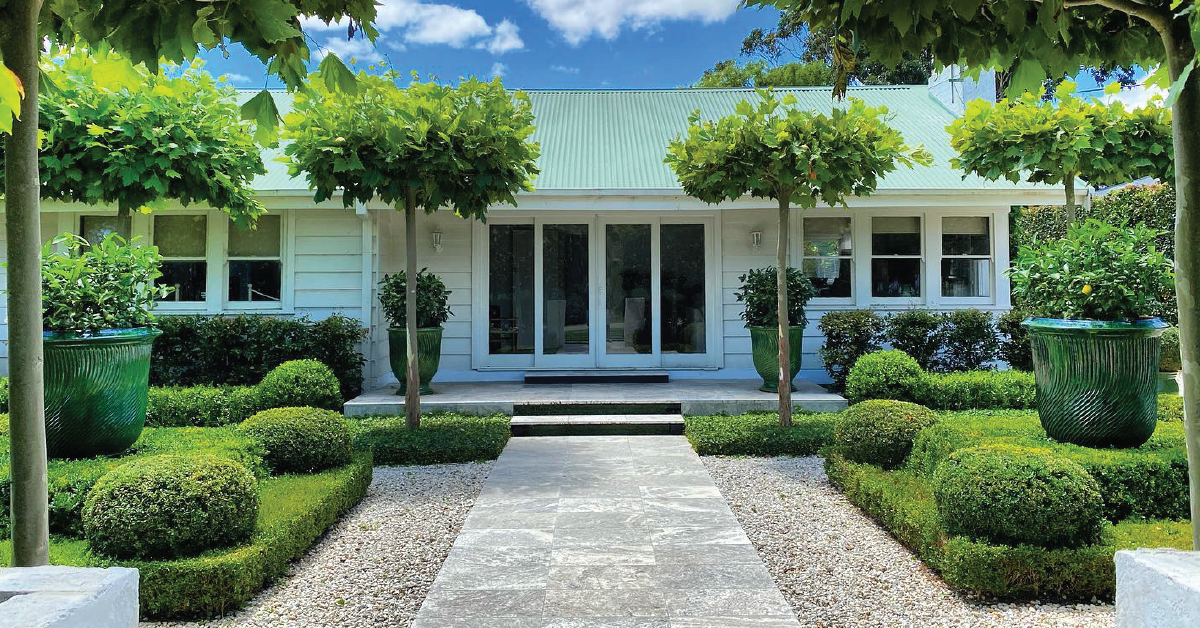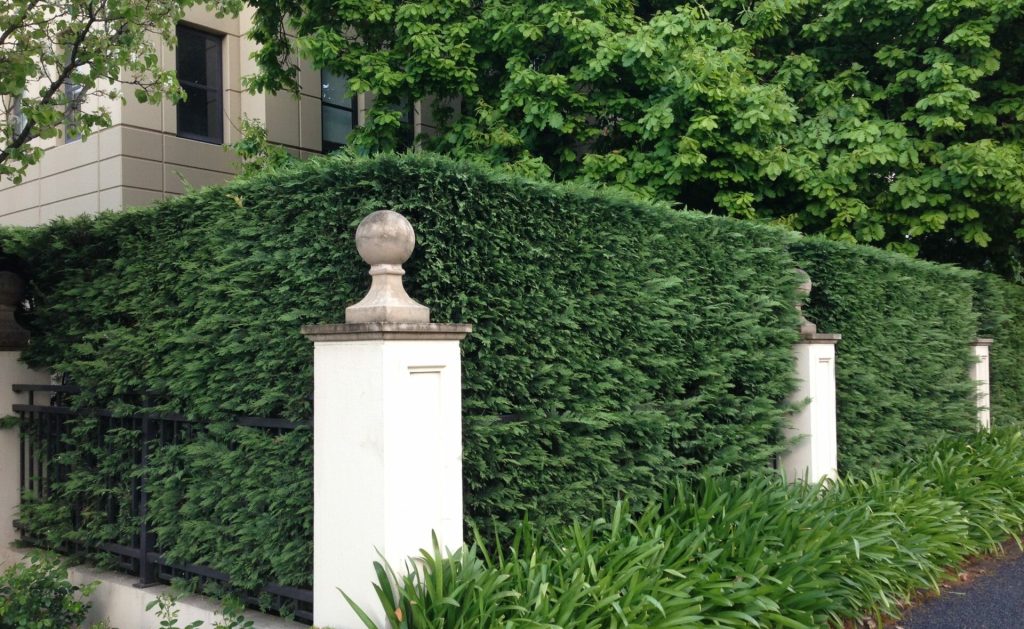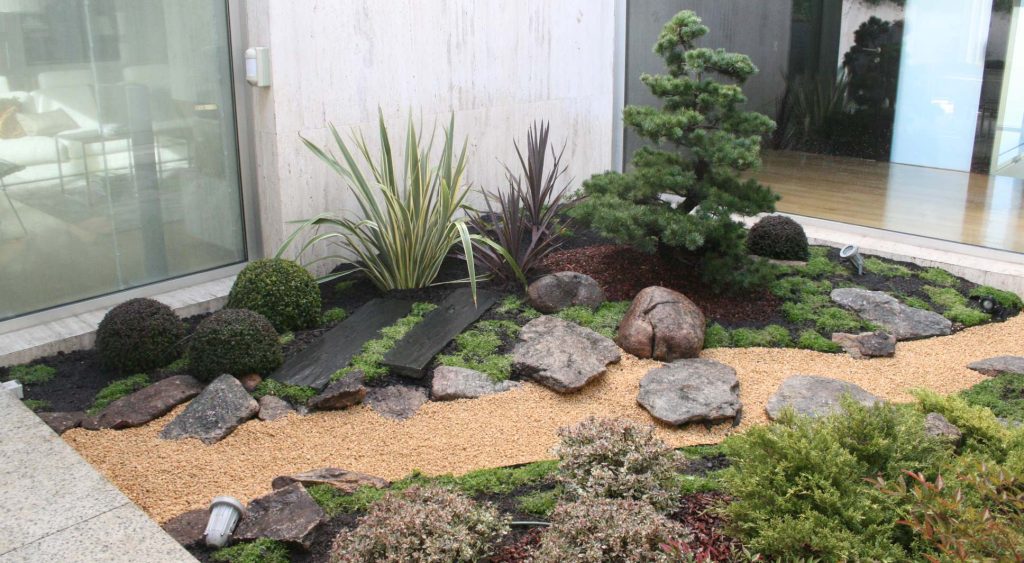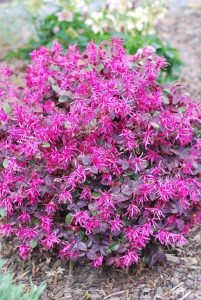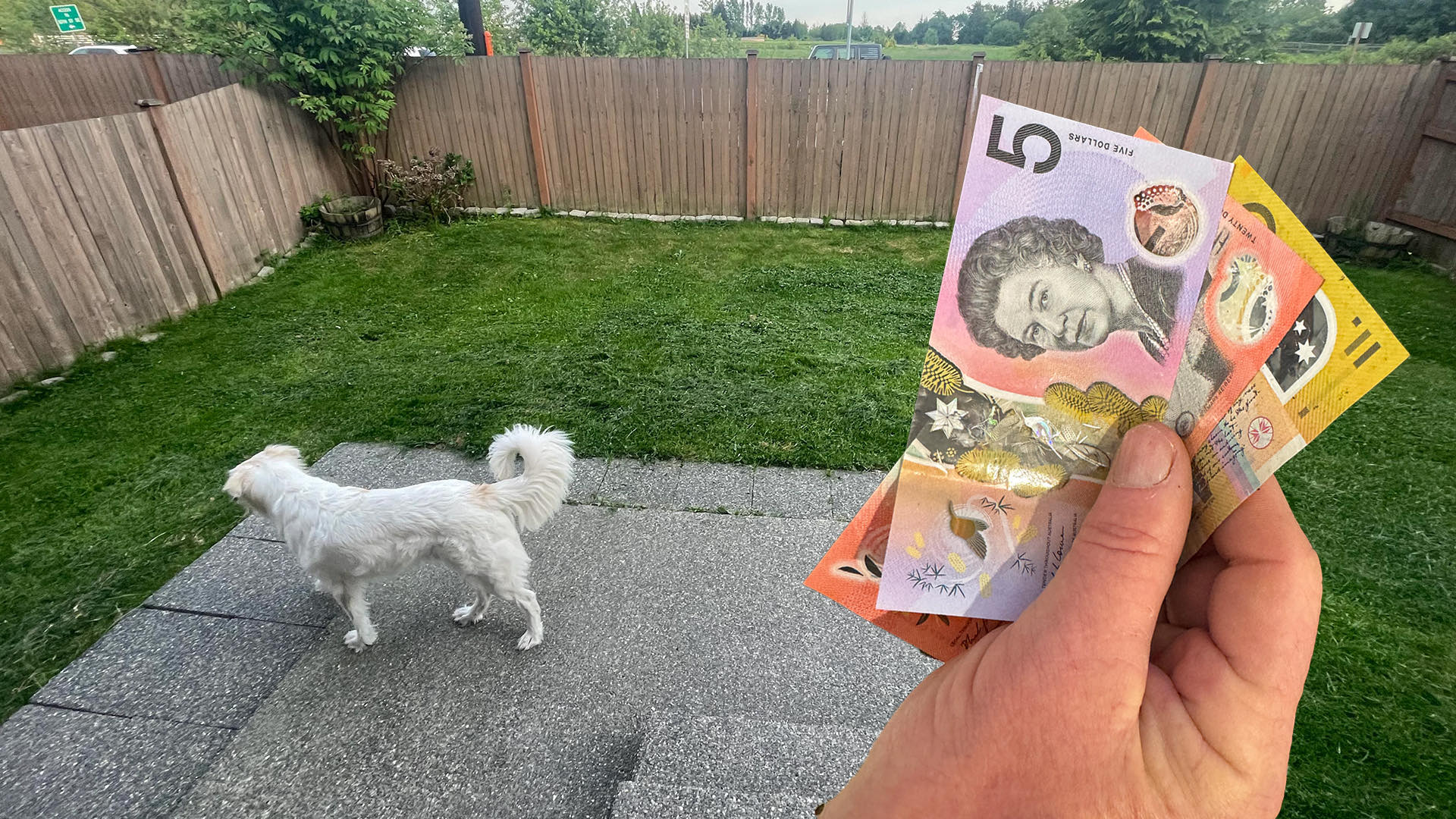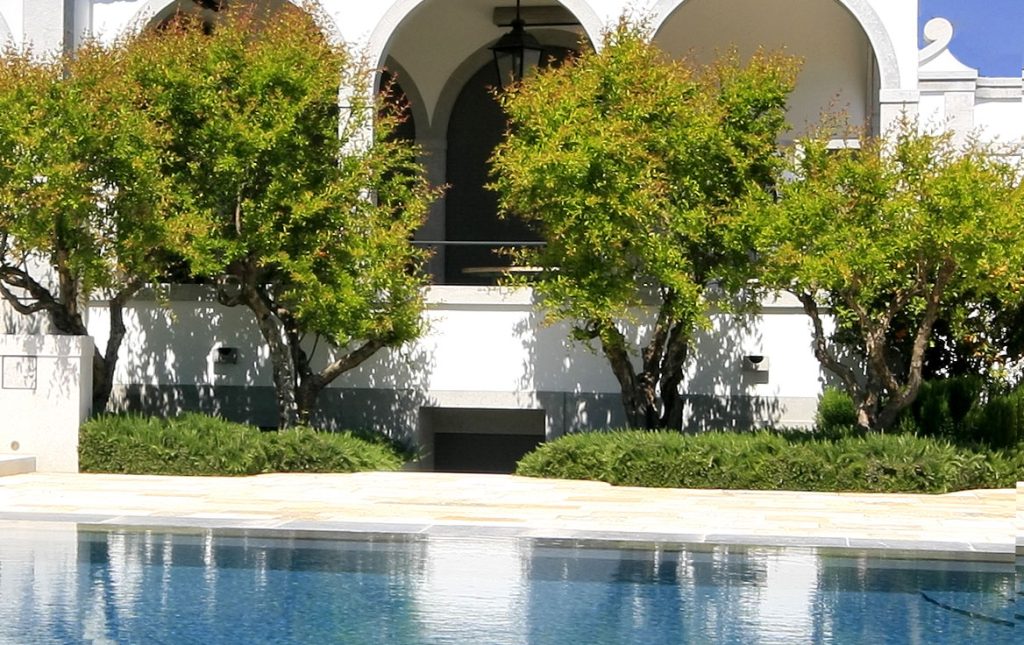
The 7 Most Common Garden Design Problems and Their Solutions
We are writing this article to help people identify and easily fix some of the issues they may be having when coming up with a garden design. On average we do about thirty garden designs a week.
The 7 most common problems we see everyday in our garden design consultations:
Going on the Market Soon
 A lot of people come to us wanting help for their garden as they are going to put their property on the market. These are the smart people that know a garden can greatly affect the value of a property.
A lot of people come to us wanting help for their garden as they are going to put their property on the market. These are the smart people that know a garden can greatly affect the value of a property.
The standard situation with this is people are on a very tight timeline, where the photographer is coming around the next week.
So the first question that we always ask, and that you should ask yourself now is – when? When will you be putting it on the market?
This is really important because depending on the season, different plants are going to look their best at different times. If someone was selling their property in June – we would not plant deciduous tree. We would be recommending an evergreen. But if it was September, then that Weeping Cherry could be a huge selling point.
Or we might have plants that are in flower right now looking absolutely stunning, but you won’t be going on the market for another six weeks. By that time it’s likely the flowering would’ve finished, and you’ve just spent all this money on something that is bare when it comes to auction day. Not ideal.

Planning ahead of time is ALWAYS the best method. The earlier you start planning, the more money, time and effort you will save. For example, if you had months before selling than you can buy quite small plants and give them time to grow and flower.
But we get that life doesn’t always allow for such long planning. So we’re going to focus on the situation where it’s Saturday morning and you’ve got the photographer coming on Tuesday.
 The first step you’re going to take is subtraction. This is where you want to bring in some outside opinions like your mum, brother, friend, whatever.
The first step you’re going to take is subtraction. This is where you want to bring in some outside opinions like your mum, brother, friend, whatever.
The reason for this is when you’ve been living somewhere for a long time you are blind to the ugliness there. But someone with fresh eyes will easily be able to point out the eye sores and ugly points.
Now this could be something like a couple of branches that were roughly hacked off a tree and just need some nice trimming to clean it up. It could be a hole in the lawn, where you need to buy a bit of turf and repair it. Maybe it’s stained concrete needing a pressure blaster to clean up.
Whatever it is, identify it and fix it. Keep picking out all the ugliest things and subtracting them.
But don’t go crazy. You don’t want to overdo it and accidentally remove something that could’ve been salvaged. For example big bushes are quite expensive, so if you have some but they’re looking a bit scraggly, invest some time in trying to get them lush and green again.

You want to step into the shoes of a potential buyer and imagine what they would be seeing as they drive up to your house. You might have a fabulous kitchen but if their first impression is of a scraggly hideous tree and brown patches of shrivelled up grass… well that’s what they’re going to remember.
A quick good tip for that grass situation – annual ryegrass is a cheap way of covering up holes in the lawn, or wheel marks on the nature strip. Right now it will only take about 14 days to turn it green. Once the weather warms up, it will only take seven days. Pretty impressive.
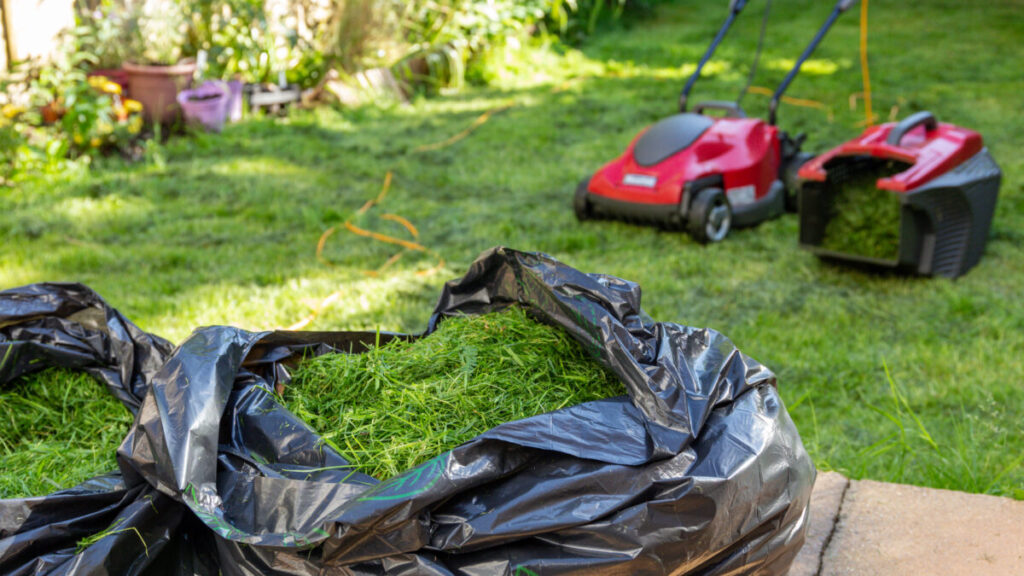 Mow the lawn, rake out a bit of potty mix and then seed the lawn with annual ryegrass. Problem fixed. Also if you have young tender grass, mow it up high and often.
Mow the lawn, rake out a bit of potty mix and then seed the lawn with annual ryegrass. Problem fixed. Also if you have young tender grass, mow it up high and often.
So just get rid of the really ugly things that are devaluing the place.
The next step is to look at what is needed and wanted. A mistake that a lot of people make is buying the plants they really like, but not thinking about the broad market.
For example, you might love a Weeping Peach, but a safer choice would be an evergreen Magnolia which nine out of ten people like. Other good choices are big bushes, Weeping Cherries and English Box.
Our next piece of advice is to buy plants on special. Here at Hello Hello we pretty much always have a sale going on. Right now is our Winter Clearance and Bare Rooted specials so it’s a good idea to come check those out. But be clever with what you buy, don’t get something just because it’s on special.
Then finish it off with black mulch, pine bark mulch or pebbles.
A Combination of Hot Sun and Deep Shade

The next problem is a garden that has both hot sun and deep shade, whether that be from a big tree or the neighbour’s two storey house.
The problem with this is that some plants are sun loving, and others are shade loving. So if you try and plant something that covers a large part of the garden, it may thrive in the sun but do terribly in the shade, or vice versa.
Here are the plants that are going to do great in both the shade and sun and give you a uniform look throughout your garden.
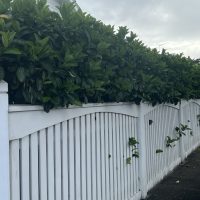 Viburnum odoratissimum ‘Sweet’
Viburnum odoratissimum ‘Sweet’
The Viburnum ‘Sweet’ loves the sun and the shade. So if you wanted to make a nice even hedge that ran under a big tree or spot of shade and all the way through to a sunspot, this is a great choice. You’ll find that planting something else could have the hedge flourishing in the sun and then turning scraggly and brown in the shade (or the other way around).
 Buxus ‘English Box’
Buxus ‘English Box’
Another great option is an ‘English Box’, we’ve seen it grow great in places that have a combination of hot sun and deep shade. We couldn’t see any difference between the sun-spot and shade-spot – it just looked beautiful and lush all over.
 Trachelospermum ‘Chinese Star Jasmine’
Trachelospermum ‘Chinese Star Jasmine’
The next great example is ‘Chinese Star Jasmine’ for a groundcover. We’ve seen Toorak gardens that have great big trees, with burning hot sun areas next to it. Then they’ve planted Chinese Star Jasmine all throughout, and it looks divine.
Chinese Star Jasmine is great if you’ve got a big area that needs covering, and it also has an incredible fragrance in the summer when it’s in flower.
Now, of course you could just plant a shade-loving plant in the shady area, and then a sun-loving plant in the sunspot. But we find that when you start planting a tonne of different things, your garden can start to look a bit messy and lack cohesion.
This was a bit of a problem back in the 80s where it would be more like a collection of random plants than a garden. Nowadays the modern style is more geared towards less plants, mass planted in the garden.
Next time you see a nice garden, count how many different plants they have. You’ll find it’s actually not that many. You could have as little as three plants and create a very stylish look or have up to about seven different plants.
So that number limits you from dividing your garden up dependant on where the sun does and doesn’t fall.
Need for Privacy
 This problem has become much more prevalent nowadays as more two storey houses and units are being built. For example, you may have brought a place 20 years ago but now there is a unit next to you that’s nine metres tall and looks into your backyard pool and you would really like to not have strangers watching you swim. Fair enough.
This problem has become much more prevalent nowadays as more two storey houses and units are being built. For example, you may have brought a place 20 years ago but now there is a unit next to you that’s nine metres tall and looks into your backyard pool and you would really like to not have strangers watching you swim. Fair enough.
So the first thing you’re going to look at is going back to that sunshade situation – is the place sunny or shady? Is it a combination of both? If yes, then check above for good plant options.
If it was shady, we would still choose Viburnum odoratissimum ‘Sweet’, it’s the second tallest screen option from our collection here. Our next choice would be Buxus fastigiata ‘Upright English Box’. It’s great in a south facing situation when you need something up against the house, or you just have limited space in the garden. It’s tall, skinny and gives you a bit of height without getting out of hand.
Another option is a Prunus ‘Cherry Laurel’ which is bigger, more aggressive and faster grower. This is the tall screen for a shade spot. Or you have Rhagodia ‘Creeping Saltbush’ with lovely silver grey foliage and grows to about 1.5 metres. It trims and shapes up beautifully.
 But let’s say you have a sunny area, a really great and practical option would be a Cupressus ‘Glauca Pencil Pine’. This is particularly good for elderly people or someone who can’t be climbing up tall ladders to trim their hedges.
But let’s say you have a sunny area, a really great and practical option would be a Cupressus ‘Glauca Pencil Pine’. This is particularly good for elderly people or someone who can’t be climbing up tall ladders to trim their hedges.
Within five years, a Glauca Pencil Pine can grow to nine metres tall and block out a three or four storey building, and they have the lush look of a Sweet Viburnum. But what makes them so practical is that once they get up high, they never grow more than a meter wide.
 They are also super tough, when they’re young make sure to give it plenty of water and fertiliser and you could get a metre and half of growth per year.
They are also super tough, when they’re young make sure to give it plenty of water and fertiliser and you could get a metre and half of growth per year.
If you want something that is a bit wider and not as tall, go with a Juniperus ‘Spartan’ Conifer. It loves a trim, and you can make it thinner or chop the top off. They grow great in small narrow spaces and are both drought and wind tolerant.
The next option is a Cupressus ‘Leighton Green’ Conifer that are fabulous for making a tall narrow hedge. They can get to around seven metres high and stay only a metre wide.
They are very fast growing, you can get a three metre hedge in two years. We actually had a customer experiment with a Leighton Green Conifer, and he got it to grow seven and a half metres in three years. Insane.
So Leighton’s Green is one of the fastest growing and most trimmable Conifers on the market.
Another favourite of ours is a Waterhousia ‘Weeping Lilly Pilly’. They are really easy to manage and trim and look very luscious and nice. Now please note that there is a beetle going around that is eating a lot of the Lilly Pillies, however the Weeping Lilly Pilly is completely fine – the beetle won’t touch them.
Then there is of course the Ficus hillii ‘Flash’, which is very popular for how fast growing it is. Under ideal conditions we reckon they could grow almost two metres in a year. Be mindful of the fact that Ficus Flash has a bit of an aggressive root system so don’t put it right up against the house and contain it to a reasonable size by trimming it.
Extra Low Maintenance
SO many people want low maintenance. We all have busy lives – full time jobs, children, hobbies, multiple commitments, and it’s fair enough that you don’t have the time to be spending hours in the garden.
Also not everyone can afford to have a contractor come in and take care of the garden. So that’s where ultra-low maintenance plants are very handy.
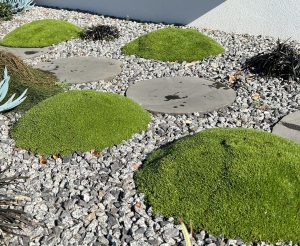 When we decide what plants are low maintenance, we look for things like are they self-shaping, do they attract bugs, are they disease resistant, do they require a lot of water and so on.
When we decide what plants are low maintenance, we look for things like are they self-shaping, do they attract bugs, are they disease resistant, do they require a lot of water and so on.
Here is a quick list of some of our favourite choices:
- Casuarina ‘Cousin It’ which grows flat on the ground and is super hardy.
- Hebe ‘Emerald Green’ grows into a lovely round ball that’s nice and neat.
- Scleranthus biflorus ‘Lime Lava’ is an Australian native that grows like a little green mound.
We do have an entire section on the website that is dedicated to low maintenance plants which you can check out here.
Small Gardens and Limited Space
 It’s quite a struggle to find a decent sized garden nowadays, we’ve seen some that are the size of a single car park or a little square of soil at the back of the townhouse.
It’s quite a struggle to find a decent sized garden nowadays, we’ve seen some that are the size of a single car park or a little square of soil at the back of the townhouse.
These are actually quite difficult to design. The first thing we do is ask where they view the garden from – is it a bedroom window or the kitchen or some other room. Then we ask what is important to them – do they want lots of colour or what plants do they really love?
Look, even the tiny handkerchief of a garden can be beautiful – you just have to be tactical about it. We find that a Japanese Zen style garden actually does really well in these micro spaces.

The next thing we do is look at the sunshade factor, then we get the budget of the customer.
Let’s say you’ll be looking at the garden through the kitchen – we like to look at the kitchen to see what would compliment or contrast it nicely.
We advise not choosing too many different types of plants to avoid the space looking cluttered. Also be very economical and clever with the decision of what plants. Maybe you have space for just one tree – well then you want a tree that is going to look great for most of the year.
We would not put something like a flowering Cherry there because it may look fantastic for a few weeks in spring, but the rest of the year it can be quite boring.
Our three favourite trees to put in such a space would be a Crepe Myrtle, Senkaki Maple and Princess Gum.
Crepe Myrtle
What makes Crepe Myrtles so fantastic is the combination of distinctive bark, lush foliage, summer blossoms, and autumn coloured foliage. So you’re getting great beauty all year.
 Senkaki Maple
Senkaki Maple
Senkaki Maples are striking with their red bark and bright green foliage, then in autumn you get a medley of fiery hues. A deciduous tree that still looks fantastic in winter.
Princess Gum is an evergreen that gives you gorgeous silver grey foliage all year round. It also has red flowers and big silver nuts that make it even more interesting.
We like to use bushes such as Loropetalum ‘Bobz Pink’ which is round and compact with purple, burgundy foliage and pink flowers. Another great choice is Abelia ‘Kaleidoscope’ (Glossy Abelia) which is a lovely golden green round bush.
Other Plants to Use
Then you could pair it with plants like Ophiopogon ‘Black’ Mondo Grass, Liriope ‘Stripey White’ and Sagina ‘Green Irish Moss’.
We suggest taking your time and being really careful with the plants you choose because a small garden has to work a lot harder than a big garden.
Tight Budget
It’s unavoidable what is going on in the economy and we understand that people can’t fork out a lot of money on a garden, but rightfully still want something beautiful.
We actually love the challenge of a tight budget because it’s where our creative problem solving comes out. Over the years we have done so many amazing cheap gardens, so please never feel that money is a hindrance.
We have an incredible range of three inch pots that are $4.99 each and you can put together a really great garden with these. Of course, it will take longer for these plants to grow nice and bushy, but if you are willing to have patience, you’re going to save big.
T his is a bit obvious but keep an eye out for sales, like we mentioned before, we pretty much always have a sale going on. One of our current ones is a six foot Weeping Birch for $79.99, something that would normally be around $200.
his is a bit obvious but keep an eye out for sales, like we mentioned before, we pretty much always have a sale going on. One of our current ones is a six foot Weeping Birch for $79.99, something that would normally be around $200.
A Silver Birch is a fantastic centrepiece for a garden and can make it look very expensive and elegant, without breaking the bank. Also right now is the BEST time to be buying plants, it is the cheapest you will ever get any plant. Come spring, everything would’ve increased greatly in price.
Hunt down the bargains, take your time and pick up a plant here in that sale and there in that sale and slowly build a beautiful garden. Make it a fun project you chip away at over a few weeks or months, rather than trying to get it done in one day.
Also be sure to follow us on our socials and be notified of any bargains happening.
The New Modern Garden
The whole point of a modern garden is, well, being modern. Something that is current and on trend right now. Of course, garden styles don’t change as quickly as say fashion, but there have definitely been shifts in what is considered modern.
We see ultra-modern gardens as a minimalistic kind of landscape. The advice from a Landscape Architect is “only plant three species in one vista.”
So you have to be very tactical with what three plants you’re choosing. Our recommendation is using Hedera ‘Canary Island Ivy’ all over the front garden instead of having a patch of lawn.
Then you can pair it with a spectacular tree like a type of Crepe Myrtle, perhaps one with gorgeous white flowers, but you have so many colour options.
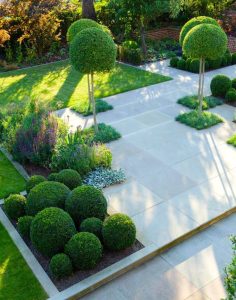 The final touch would be some English Box topiaries, you could plant a range of sizes, and have fun with what shapes you choose.
The final touch would be some English Box topiaries, you could plant a range of sizes, and have fun with what shapes you choose.
This garden is really easy to do and maintain. It’s also not very expensive – but it looks very classy and elevated.
You could drive up Hopetoun Avenue in Toorak and you’ll see quite inexpensive plants like your English Box and Canary Island Ivy, or Chinese Star Jasmine and Silver Birches. For the modern look you should mass plant for a cohesive and slick look.
Another thing we’re noticing is that people are doing lots of sculptures with plants like English Box. But you could also grow a green Coprosma or a Cotoneaster ‘Bearberry Cotoneaster’ and cut it into a large freeform shape. Then plant a couple of Maples in front of it.

We’ve also seen gardens where they have pebbles or sand and large, interesting sculptures around it with some Japanese Maples. They look incredible.
When your house also has some spectacular modern architecture, the addition of a modern garden just really sets it off.
The Main Takeaways
So there you have the seven most common garden design problems, and how to go about fixing them. The main thing is to be clever with the plants you choose, plan ahead and take your time, and when in doubt get a second opinion.
Ready to take the next step in your garden plans?

Feeling inspired to create your own garden, but want some expert advice? Try our one-on-one garden design service with Chris. Together you’ll come up with a selection of plants along with a layout plan that gives you the look you want, as well as being suitable for your local soil and conditions.
get your own tailored modern garden design:
Articles you may also like

Top 10 Best Plants for Shady Areas
There has never been more shade in Melbourne as there is now. Townhouses, units, and apartments are on the rise. Backyards are getting smaller. Sunlight is becoming more blocked. But everyone still wants a garden filled with plants. And you

Top 10 late winter blossoms for an early spring
We put together this list of the Top 10 plants that flower first in late winter (to give you that early spring feeling) because let’s face it: everyone loves spring. After the cold, dark gloom of winter, it’s always wonderful

Top 10 Tips for Winter Garden Maintenance
Our tips for winter garden maintenance to prepare your garden for spring in Australia. Winter in the garden can seem like a miserable experience. Deciduous trees have lost all of their leaves, annuals have died down and a lot of





